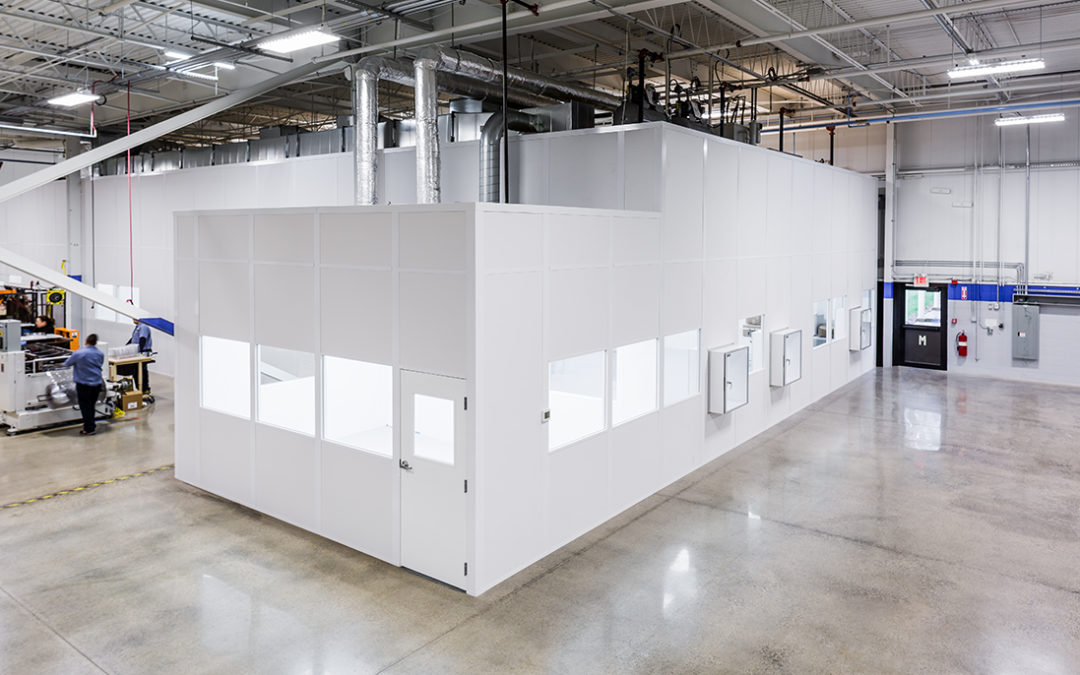
5 Considerations for Your Plastics Injection Cleanroom Design
Your new plastics injection cleanroom needs to be a highly efficient machine. Every component should be considered in the design to work together to help you achieve your goals. This includes your cleanroom classification requirements and other needs and wants for your team to be successful.
Let’s explore everything you’ll need to consider when designing your plastics injection cleanroom. Then, you’ll be ready to begin cleanroom construction with the help of a qualified cleanroom engineer and supplier.
#1 Understand Your Plastics Injection Cleanroom Requirements
Before you can design the ideal plastics injection cleanroom, you need to have a thorough understanding of your classification standards and the basic requirements for your project.
Your plastics injection cleanroom classification will inform your cleanroom design in essential ways like: defining the percentage of ceiling coverage of fan filter units required to reach air particle count requirements, dictating the ideal range for temperature and humidity in your cleanroom while in operation, specifying materials that are acceptable for plastics injection cleanroom construction, and more.
Also make note of any industry-specific requirements for your cleanroom, such as the type of equipment and mounting requirements as well as the energy dependencies for the equipment you’ll be using.
#2 Compare Different Types of Cleanrooms
For plastics injection cleanrooms, modular construction can deliver the ultimate versatility for any application. There are three main types of modular cleanrooms. While all can reach the classification requirements of plastics injection cleanrooms, you may find that one type better serves your specific project needs.
- SoftWall Cleanrooms have an extremely flexible design makes them a great choice for many plastics industry applications, particularly those that need room to grow
- HardWall Cleanrooms allow a high level of control over pressure, static, humidity, and of course, contamination
- RigidWall Cleanrooms offer more flexibility than HardWall cleanrooms and come in clear, minimalist panels
#3 Determine the Ideal Plastics Injection Cleanroom Layout
When designing your cleanroom layout, you’ll need to determine the best flow of materials and personnel around mounted equipment and features of the facility that you can’t change. If you’re building your cleanroom in your existing structure, you may need to design your cleanroom layout around structural details, incorporate HVAC inlets and outlets, and utilize light from existing windows, etc.
Your cleanroom layout should be just large enough to accommodate equipment, personnel, air, and paths for them to move, but not too large to create extra space and air you’ll need to pay to filter, heat, and treat.
Plastics injection molding cleanrooms also typically require extra overhead space to accommodate large equipment such as overhead cranes to service molds and machinery. Extra high ceilings, nonstandard height doors and pass throughs, and a reinforced ceiling grid to support mounted equipment are all considerations for your plastics injection cleanroom design.
#4 Airflow Pattern Design Matters
Your airflow pattern design is essential to an efficient and effective cleanroom. When clean, filtered air is pumped into the controlled space, it needs a clear path to flow through the room until it is removed. Obstructions and incongruencies can impede airflow uniformity, make your cleanroom inefficient, and risk contamination.
Air balance and positive pressurization can also be considered when designing your airflow pattern, by adding more air into the room than is taken out.
#5 Work with Cleanroom Engineering Experts Can Design the Ideal Plastics Injection Facility
To design, build, and install the best plastics injection cleanroom, it’s a good idea to seek out the expertise of cleanroom engineers. Working with your cleanroom classification information and your project goals, they can help you get the highest-performing, most efficient cleanroom for your investment.
For a turnkey cleanroom that checks all of your boxes, trust the experts at Angstrom Technology. Whether you’re updating your current cleanroom, or starting from scratch, we can work with you to develop the cleanroom solution that meets your needs and your budget. Request your free project quote to get started.







